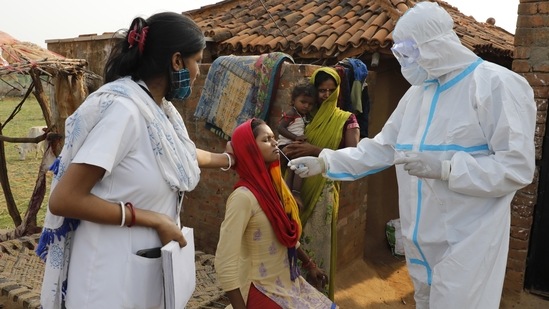Centre sets up portal to track management of Covid in rural areas
Named Covid dashboard, the portal helps policymakers and administrators to find out just how prepared rural India is in terms of manpower and infrastructure to meet the challenge posed by the pandemic.
A new web portal that tracks how Covid-19 is being managed in rural areas of the country is the government’s latest tool to tackle the pandemic, said people involved with it.

Named Covid dashboard, the portal helps policymakers and administrators to find out just how prepared rural India is in terms of manpower and infrastructure to meet the challenge posed by the pandemic.
“India has more than 2.5 lakh gram panchayats. As more rural areas got affected by the second wave of the pandemic, these grassroots institutions have assumed immense significance with limited healthcare services available in the rural areas,” said a senior official involved with the dashboard on condition of anonymity.
The dashboard, now available publicly, allows anyone to track the formation of village health and sanitation committees, enrolment of frontline workers and volunteers, or the creation of isolation centres in schools or panchayat buildings. This helps in identifying gaps and tracking the overall progress, said officials.
As of now, activity on the dashboard isn’t much, but the government is hopeful that it would pick up pace once the village panchayats start uploading real-time data.
The portal also shows the readiness of the panchayats in terms of home isolation kits, updating of community preparedness checklist, and the identification of high-risk individuals.
“In the vaccination drive too, the panchayats now play a critical role. Dissemination of correct information, encouraging people to take vaccines, organising surveillance and campaigns are the key roles of the panchayat leaders,” said a second official.
When the centralised vaccination programme was rolled out on June 21, 63.68% of the doses were administered in the rural areas, the government had said in a press release. This amounted to 56.09 lakh doses while the urban areas recorded the vaccination of 31.9 lakh people, the release said.
V K Paul, member (health), NITI Aayog, recently said that more than half of the total vaccinations carried out in the country in the last few weeks happened in the rural areas. He said that with the spread of information technology, educating people about vaccines became possible, which has given the government more confidence about being able to cover all of rural India.
Get Current Updates on India News, Ram Navami Live Updates , Lok Sabha Election 2024 live, Elections 2024, Election 2024 Date along with Latest News and Top Headlines from India and around the world.




